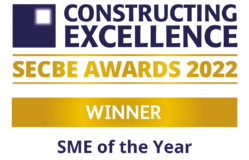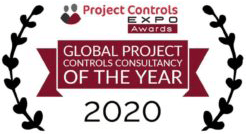What Are Project Controls Procedures in Construction & Who Needs Them?
Let’s talk about procedures, more specifically project controls procedures for construction. Research shows that only 34% of completed projects are achieving their time, cost, and quality objectives, so why is this? One reason is that project management teams are not investing the time and money at the beginning of a project to develop a robust project controls procedure that defines how they are going to manage their project. Project controls procedures are the backbone of any construction project; it is the project management team’s plan for integrating the project’s core elements of scope, time, and cost. Without a project controls procedure in place, most projects have either inconsistent and/or inaccurate data flows. This impacts the decisions that are made during the construction phase and usually leads to a poor success rate.


Project Support Not an Obstacle
Firstly, a project controls procedure is not as rigid and authoritarian as it sounds. Essentially, a project controls procedure should be the project management team’s structural plan to integrate the construction project’s scope, time, and costs. By integrating these core elements, the team can start to understand the project’s overall health and facilitate early detection of problem activities. The plan should outline the people, project controls processes, and the systems required to integrate the core elements of your project. Who is going to do what? How? When are they going to do it? And what platform are they going to use?
Plan First
Construction activities would not start on a project without a plan. This thinking should also be applied to the management of your project. Without a project controls procedure in place, it should not leave the starting gate. For this reason, project controls professionals should be engaged at the early stages to ensure that the plan is developed in time for the project to transition into the delivery phase. This plan will then guide your project management team and ensure a steady and reliable stream of data. This enables decision-makers to attempt to positively influence the time, cost, and quality outcome of your project.
Build the Plan
Like developing any construction plan, it is the contribution of an entire team, not one individual, that ensures its success. For this reason, although the project controls professional will ultimately author and then manage the plan to integrate the core elements of the project, it will not be successful without buy-in from key stakeholders including project managers, department leads, and project staff. Every stakeholder should be engaged and understand the purpose and goal of the procedure. From here, stakeholders can begin to understand how their roles and responsibilities tie into this plan. This will allow them to support the project controls professional during the development of the project controls procedure.
How Are We Going to Get There?
Once stakeholders support the plan, it is the role of the project controls professional to design and coordinate a steady flow of information to ensure that the project proceeds as planned. This results in each department having the relevant information to develop and submit their reports, which then become the basis for analysing the overall health and taking corrective action if / when required. This part of the plan is aimed at ensuring the consistency of the data throughout the reporting cycle. The procedure should give each department enough time to compile their data and reports as well as to perform the required quality control to ensure accuracy.
With consistent high-quality data and reports flowing out of each department, decision-makers can begin to understand how the project is performing and feel comfortable that they are basing their decisions on sound information. This, in turn, leads to decisive actions to correct aspects of the project that are not meeting the time, cost, and quality objectives.
Capture the System
The data analytics industry has a multitude of systems available that are aimed at collecting, storing, and analysing data. Some have been specifically developed as proprietary software that allows select companies to manage their project in the way they choose. What works for others may not work for your project because of its size, scale, and complexity. To illustrate this, imagine comparing a small constructor to a major project. You would not expect to find the same systems at the core of the project management teams, likely because of costs and capability requirements. For this reason, it is advisable that data science experts suggest which software best suits your needs and focus on the structure of the data.
Within your project controls procedure, it is important to define how other stakeholders will receive their data. For example, trying to compare a picture with 1,000 lines of cost data to an Excel spreadsheet with Earned Value. This can lead to errors, as data is manipulated and transposed to match other systems; people can also become frustrated and lose interest. Therefore, at the beginning of the project, stakeholders need to decide what data to provide, when and how to provide it. By understanding how to best present the data, it can be collected and transferred in a format that can be useful later.
Through Discipline Comes Freedom
It may sound like an extra step but really, it is a way of building discipline; and through discipline comes freedom. The freedom to stop worrying about the accuracy and flow of data and more freedom to focus on managing your project. By taking the time up-front to engage stakeholders and document your plan, you can stop worrying about the inner workings of your project team and more on flying your project. By having everything written down, new starters can easily be brought up to speed with minimal contact; this ensures seamless integration which further increases your freedom as a project manager. Do not forget that you cannot leave things on autopilot. Like any plan, there should be a means of monitoring, controlling, and applying corrections if your plan is not helping you achieve your goals.
Conclusion
As projects continue to grow and become more complex, it is important to understand why, as an industry, we are falling short in terms of success rates. One key element is taking the initial investment of both time and money to develop a project controls procedure. This becomes the backbone of your project, integrating scope, time, and cost, and freeing you to focus on your project instead of the inner workings of your project team. You should engage a project controls professional early on. Ensure that your procedure is focused on the people, processes, and systems you will use to manage your project. Stakeholders will then work together and begin to consistently produce high-quality data and reports. This is required to understand the health of your project.
When the time comes to take decisive actions to correct deviations, you will have the confidence necessary to base your decisions on this data. This will lead to a more successful project aimed at achieving its time, cost, and quality objectives.
If you’d like help with project controls procedures for your project, get in touch!
You can call on +44 (0)20 7404 4826 or email us at info@logikalprojects.com
Or you can use the Contact Us form here.






